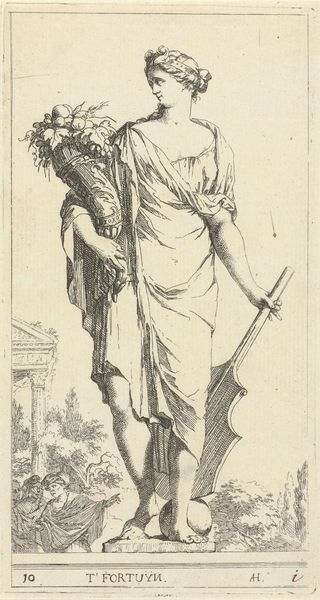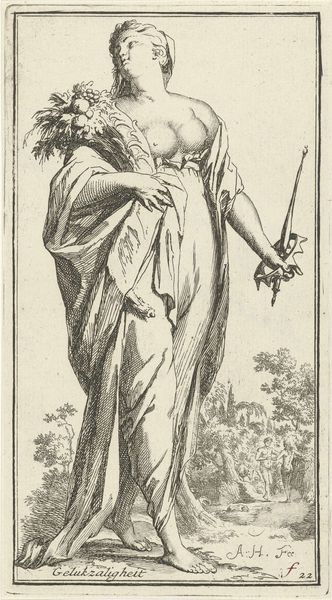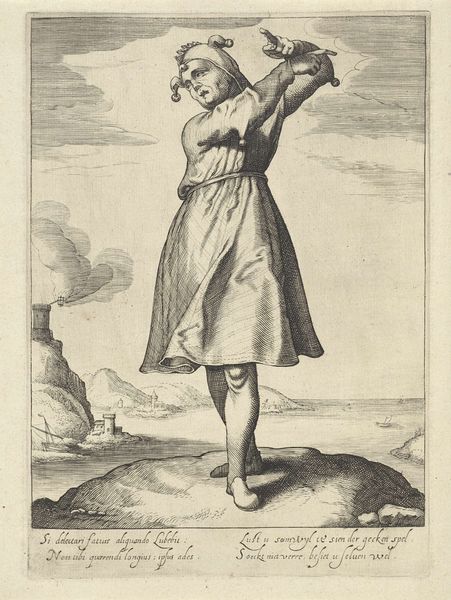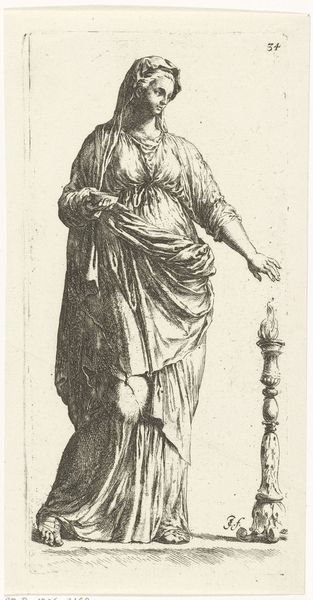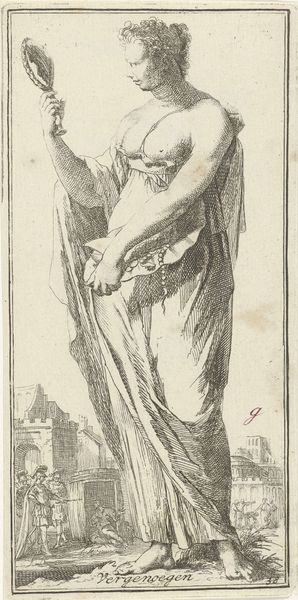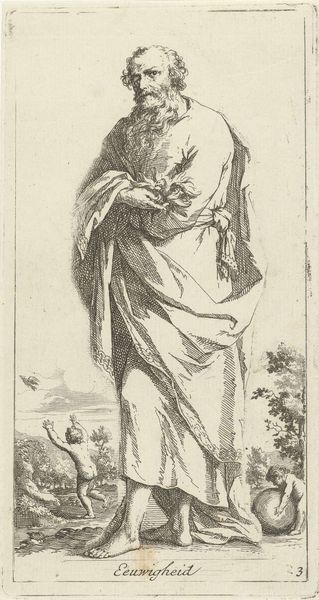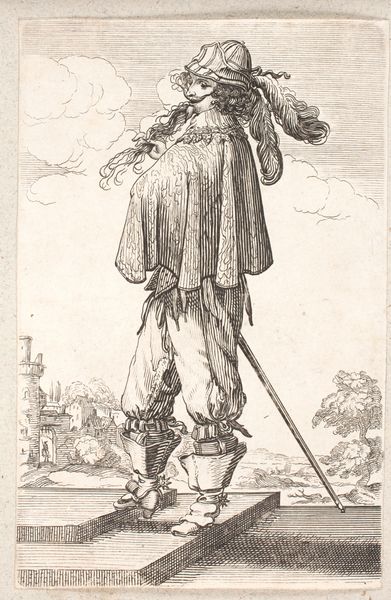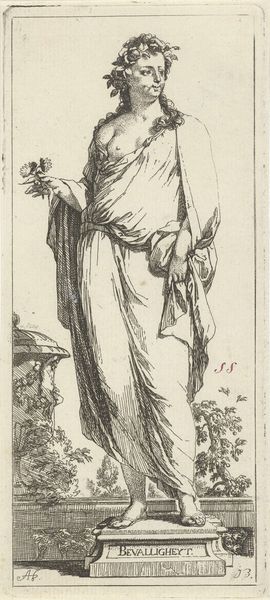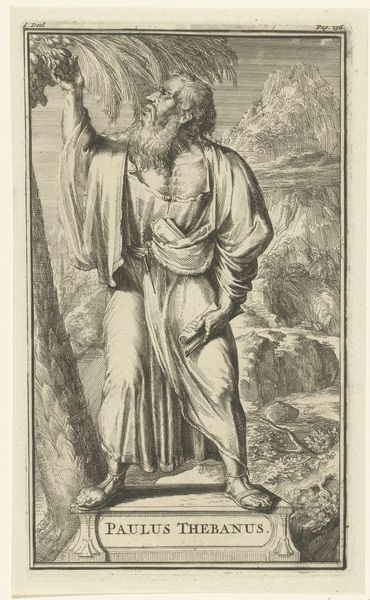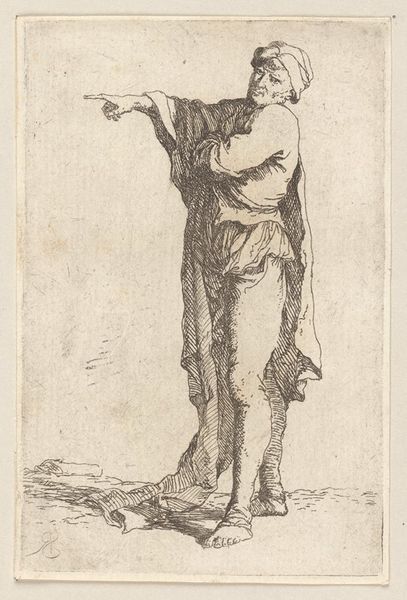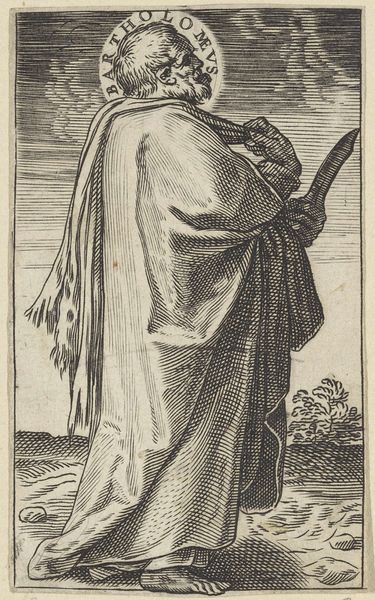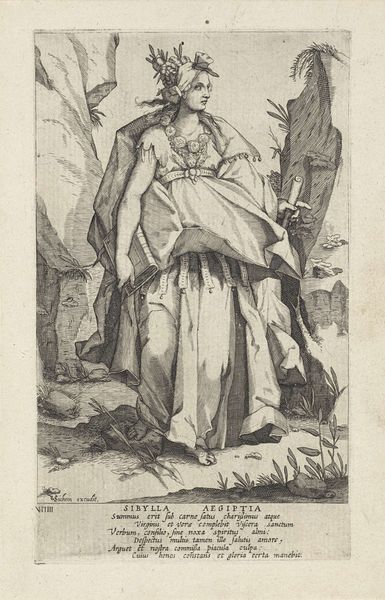
engraving
#
portrait
#
allegory
#
baroque
#
figuration
#
line
#
engraving
Dimensions: height 180 mm, width 90 mm
Copyright: Rijks Museum: Open Domain
Curator: Oh, she seems rather…melancholy, doesn’t she? The way the light catches her downward gaze… Editor: Indeed. We’re looking at "Personificatie van de zedigheid," or "Personification of Modesty," an engraving dating back to the 1710s, crafted by the skilled hand of Arnold Houbraken. It resides here at the Rijksmuseum. Curator: Houbraken, of course! I always find his linework so delicate, even when depicting...well, shall we say, the burdens of virtue. You can almost feel the weight of the drapery, which in this instance might as well represent society's expectations. Editor: Precisely. It’s interesting to unpack what modesty signified in the early 18th century, especially when represented by the female form. Notice her somewhat bared chest and the way her garment drapes from her waist. Is this modesty, or is it something else entirely? Consider, also, the tiny figure, of someone climbing a hill, almost out of the shadows... Curator: Hmm, the shadowy figure almost out of the background. Almost an afterthought...and the eye on the sceptre she holds – watching, always watching? The allegory runs deep. This feels less like an aspiration and more like a… prison of the self. Or society forcing one into a "virtuous" construct. Editor: Right, this portrayal echoes broader concerns of that era – the performance of morality, the surveilled female body, and the intersection of power and gender. It encourages us to question whose modesty is truly being protected here. We might further argue that the virtue of being seen to be modest is prioritised, here. It’s about adhering to the role rather than actually ‘being’ virtuous. And then of course this whole engraving is in a box, lines again, containing her virtue. Is the woman depicted even in control? Curator: So, beyond the obvious surface reading of idealized virtue, the engraving becomes a commentary, maybe even a critique. Or at least a series of thought-provoking questions, rather than didactic sermon. Editor: Yes, which might offer a more insightful understanding of modesty and virtue, but also prompt further investigation in Baroque society's anxieties, hopes, and often hypocritical expectations of gender roles. Curator: An image to ponder over. Thank you.
Comments
No comments
Be the first to comment and join the conversation on the ultimate creative platform.
